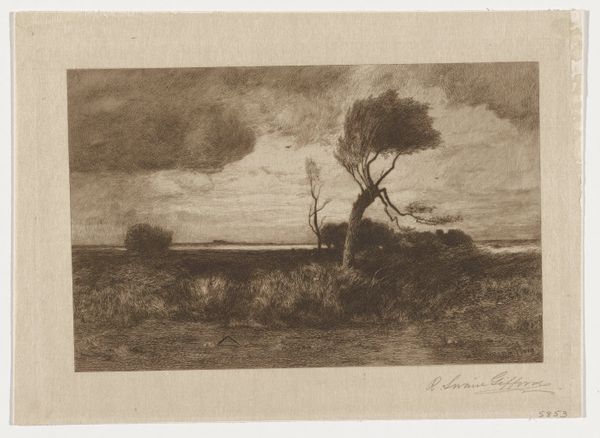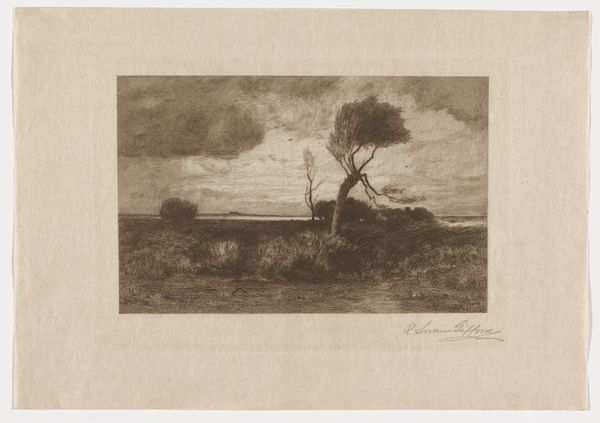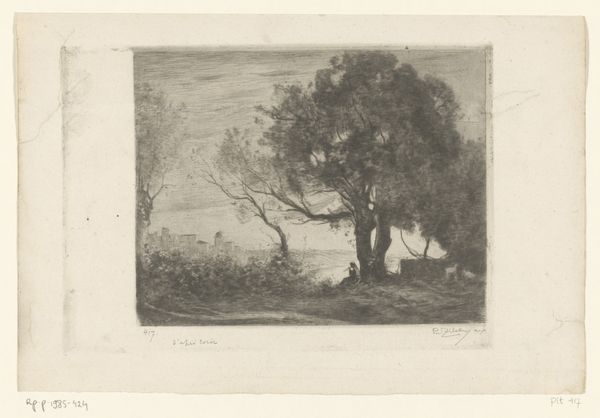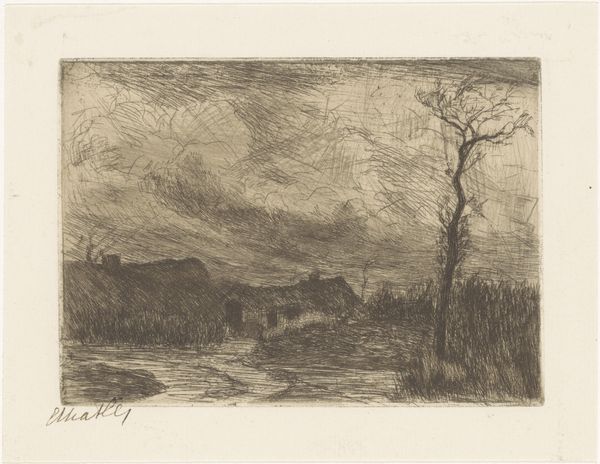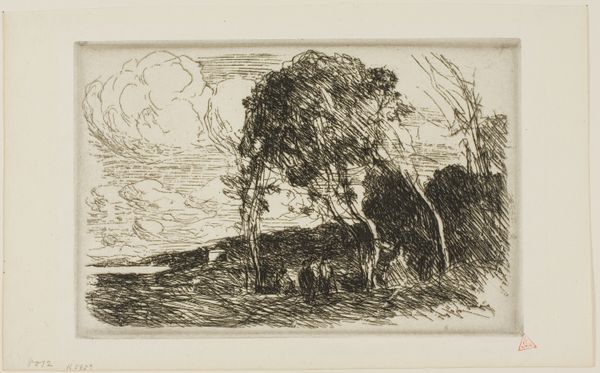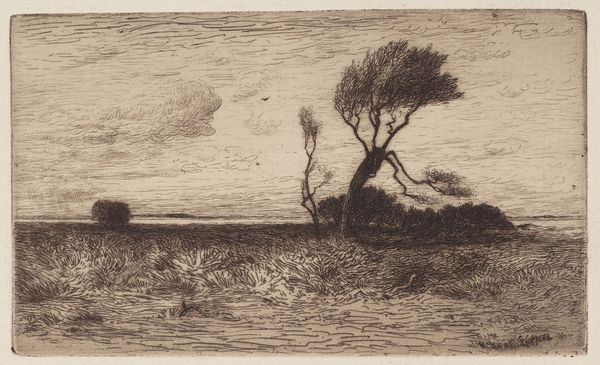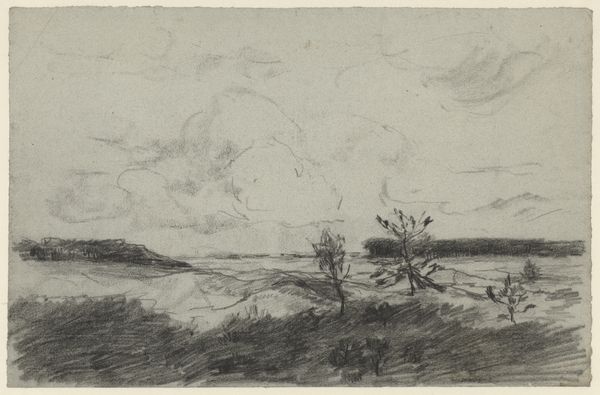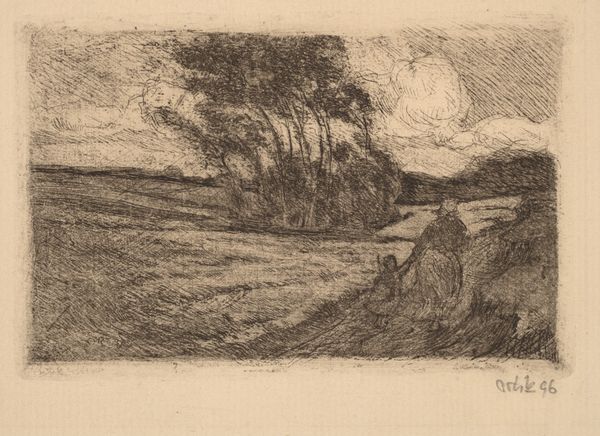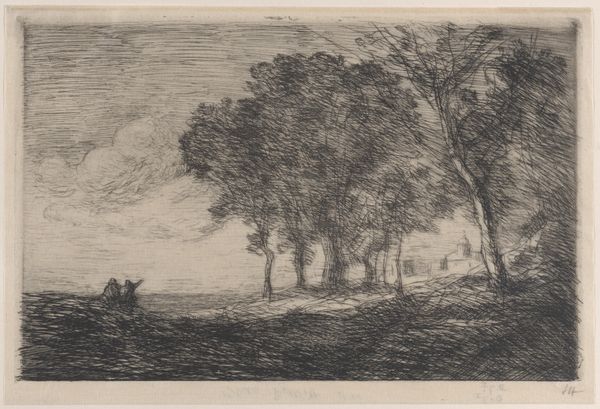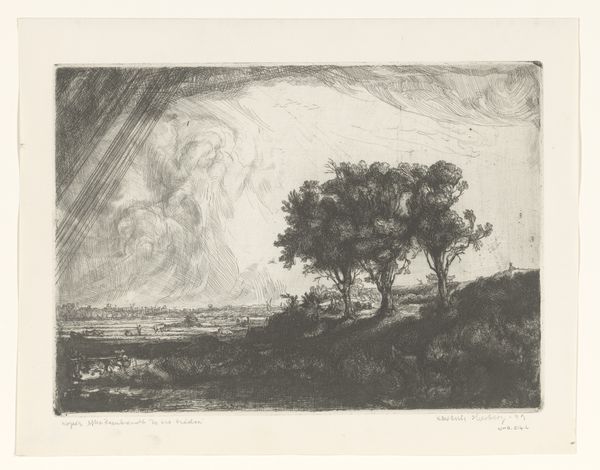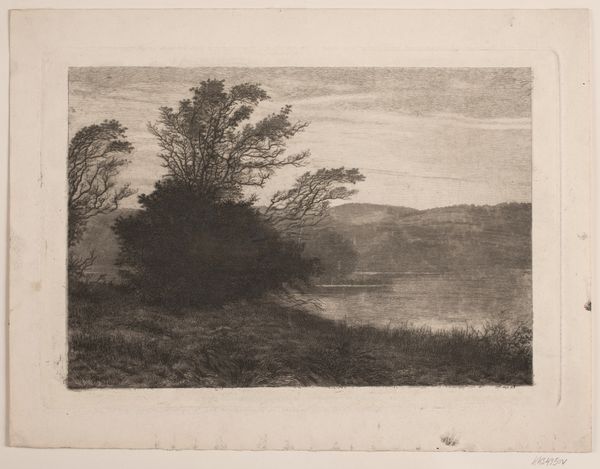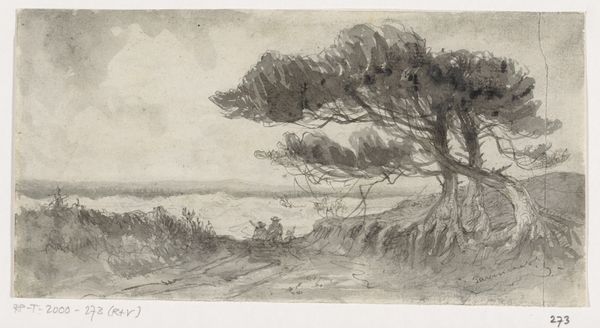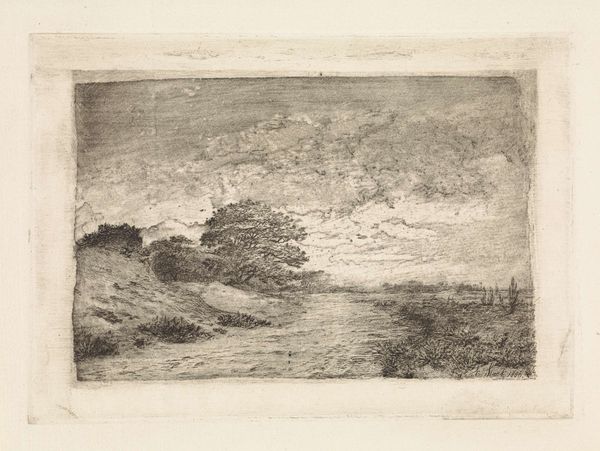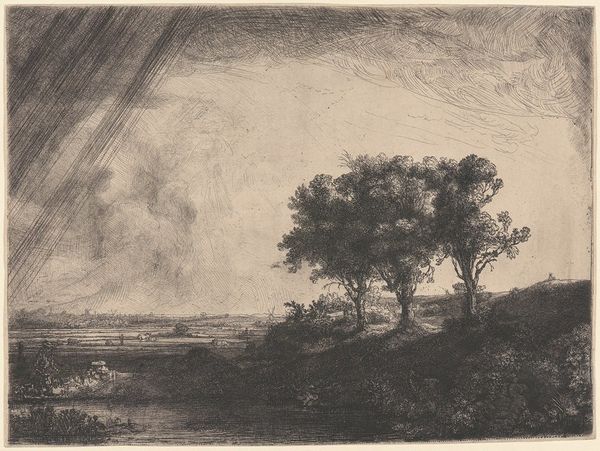![Near the Coast [large plate] by Robert Swain Gifford](/_next/image?url=https%3A%2F%2Fd2w8kbdekdi1gv.cloudfront.net%2FeyJidWNrZXQiOiAiYXJ0ZXJhLWltYWdlcy1idWNrZXQiLCAia2V5IjogImFydHdvcmtzLzJlODlhM2ExLWVjMjctNGI5MS05MGNiLTBhNjRiZDNkZWYxOS8yZTg5YTNhMS1lYzI3LTRiOTEtOTBjYi0wYTY0YmQzZGVmMTlfZnVsbC5qcGciLCAiZWRpdHMiOiB7InJlc2l6ZSI6IHsid2lkdGgiOiAxOTIwLCAiaGVpZ2h0IjogMTkyMCwgImZpdCI6ICJpbnNpZGUifX19&w=3840&q=75)
print, etching
# print
#
impressionism
#
etching
#
landscape
#
realism
Dimensions: plate: 17.4 × 27.1 cm (6 7/8 × 10 11/16 in.) sheet: 29.5 × 42.2 cm (11 5/8 × 16 5/8 in.)
Copyright: National Gallery of Art: CC0 1.0
Robert Swain Gifford created this etching, Near the Coast, using a metal plate, likely copper or zinc, covered with a waxy ground. The artist would have drawn through this ground to expose the metal, which was then etched with acid. The material qualities of the plate and the acid's bite determined the depth and character of the lines. This process, known as etching, allows for fine detail and subtle tonal variations. The density of the marks creates depth and atmosphere, evoking a somber, windswept scene. This printmaking technique was part of a broader ecosystem of image production that allowed for wide distribution. It democratized art by making it more accessible beyond unique, hand-painted works. The labor involved in creating the original plate contrasts with the relative ease of producing multiple impressions. The commercialization of art through printmaking reflects the changing dynamics of artistic production and consumption in the 19th century, highlighting the intersection of art, labor, and market forces.
Comments
No comments
Be the first to comment and join the conversation on the ultimate creative platform.
